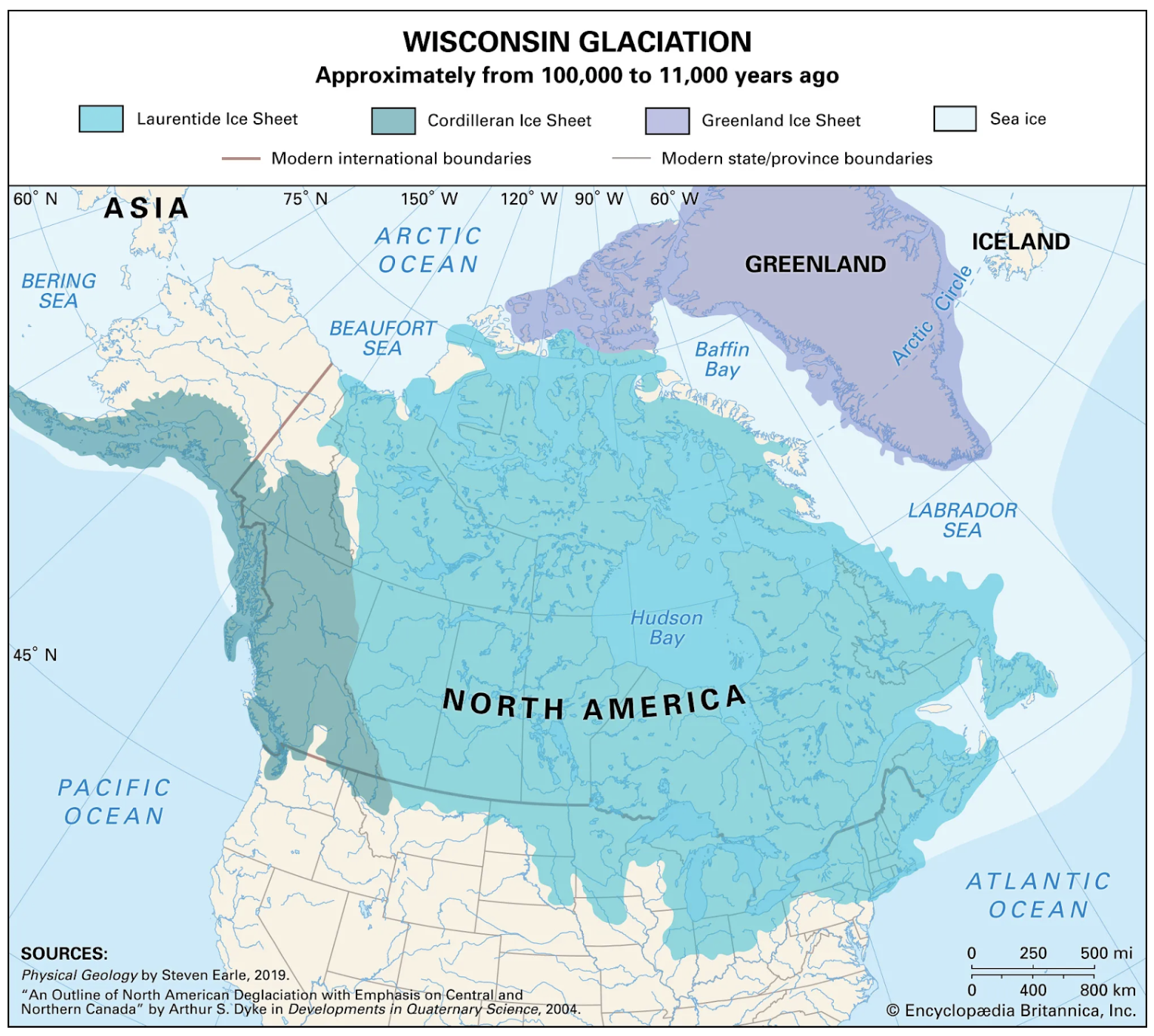
Lenape Women
The Early Years*
*Edited version of a chapter in Portrait of the Rose City: A History of Madison, New Jersey, by Dr. Frank J. Esposito
Wisconsin Glacier
Northern New Jersey as we know it today began taking shape hundreds of millions of years ago. Most dramatically, ancient volcanoes, located somewhere near what is now the northern part of Morris County, began to erupt about 125 million years ago. At least three times, molten lava spewed forth then cooled into solid hills that long have borne the name Watchung, given by the indigenous people of the area, meaning “on the hill,” or “mountain wall.”
While the volcanoes roared in the Watchungs, the sea invaded as far North as an imaginary line between present day Trenton and New Brunswick. The ancient Sea teemed with enormous creatures, sometimes as long as 50 feet. Sharks up to 70 feet long also populated the hazardous waters. Closer to what was to become Madison, huge lumbering dinosaurs eventually roamed the land in search of prey or plant food.
The Ice Age would be nature's last major outrage against our planet Earth. At least three glaciers had advanced into what is now New Jersey. The recent, therefore, the one to leave the most evidence, was the so-called Wisconsin Glacier. Imagine an ice block a mile or more deep over much of northern New Jersey. This awesome ice sheet came to rest along the Terminal Moraine, that place where a glacier dumps all the ground-up debris it has scraped off the surface of the earth. Deep beds of sand, pebbles and gravel are visible evidence of the moraine. In what is now New Jersey, the glacier terminated on an irregular line from Perth Amboy to Summit, Madison and Morristown.
The indigenous people were the first humans to inhabit New Jersey. Their very name, Lenape, most likely meant among various interpretations, “common people.” Inevitably some of them found what is now called Spring Garden Brook. This was their kind of land: clean, with plentiful water, ample game and areas of open ground between patches of trees.
The Terminal Moraine ridge made a natural route through the wilderness, and the Lenape gradually widened a path presently known as the Minisink Trail. It meandered from the Delaware River to the seashore, near Sandy Hook. In present-day Morris County, the path ran from Dover through Morris Plains to Madison, where it followed present Hanover Avenue, Park Avenue and Kings Road to Main Street in Chatham.
Two Lenape Women, 1880
The Lenape lived in small hamlets along the rivers and streams of New Jersey, eastern Pennsylvania and southern New York. Other indigenous people knew the Lenape as one of the oldest native groups. The Lenape left material evidence, or artifacts, of their culture in Madison’s Memorial Park, where they camped along Spring Garden Brook on a site that later became the farm fields off present Rosedale Avenue.
Disease, especially smallpox, severely diminished the Lenape population. They had no natural immunity to the disease, which was transmitted by contact with the colonists. They experienced smallpox epidemics in 1654, 1663, 1679, 1715-1717, and 1731. Malaria also decimated the Lenape as early as 1677. Most, but not all, were gone by the mid-point of the 18th century.
While indigenous peoples were once a vital part of the area, their time was gone in the Madison region by 1715. Yet, the Lenape would not be heirs of the land. Instead, Europeans would ruthlessly inherit it, as settlers originally from another continent were about to wend their way further westward through the gap at the Short Hills.



